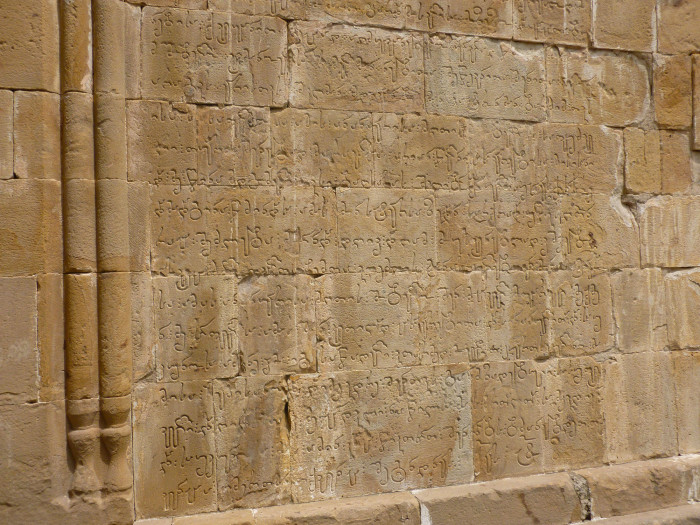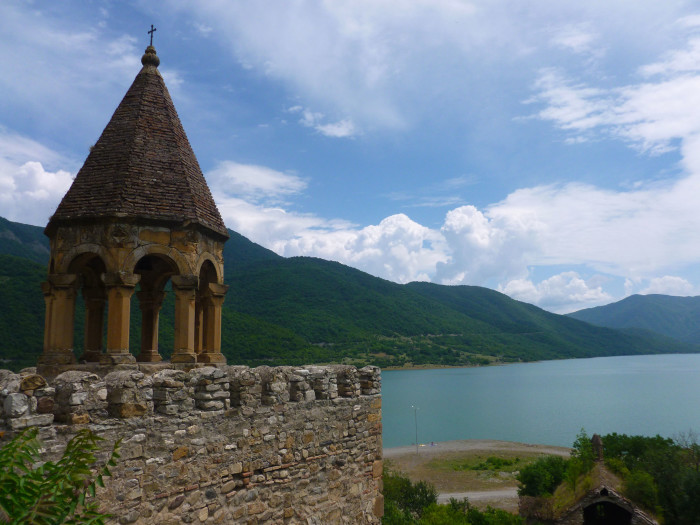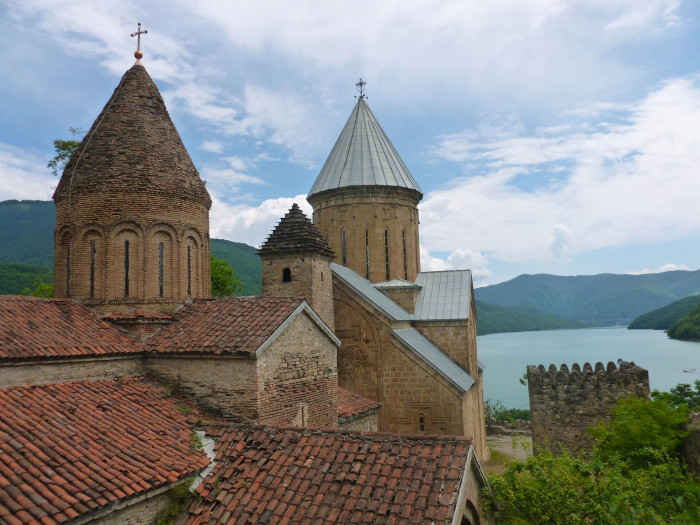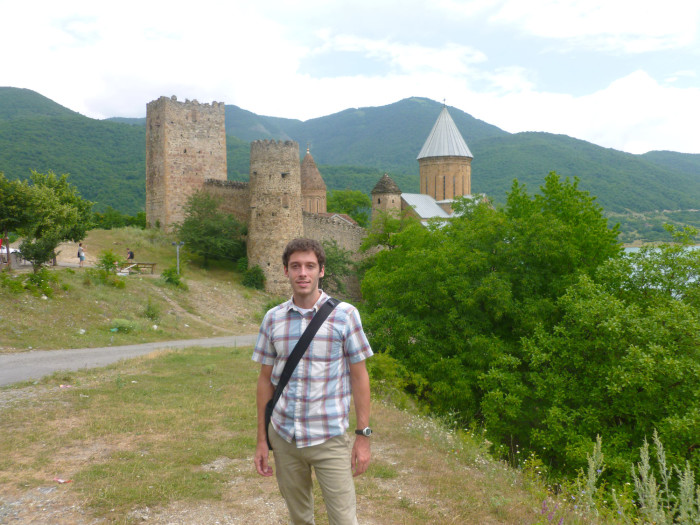While I was walking from one church to another in Mtskheta, I was approached by a taxi driver. He offered to take me up the mountain to Jvari Monastery (something I needed to find a taxi for anyway), and I accepted. While we were making our way up the mountain, he talked about how he drives tourists all over Georgia, and he started rattling off place names. One of them was Ananuri.
I’d been looking at photos of Ananuri a couple days earlier and trying to figure out how to get there. From what I could tell, there was no public transportation to Ananuri, so I figured I probably wouldn’t make it out there. But when Davit, the driver, mentioned Ananuri, I asked him how long it would take to get there. “The way I drive?” he said. “20 minutes.” Sold.
Ananuri consists of a couple old churches, some high walls, and several watchtowers. It’s perched photogenically on the edge of Zhinvali Reservoir. I believe the structures date from the 17th and 18th centuries—pretty recent as far as Georgian history is concerned.
It was a lot of fun talking to Davit as we drove to and from the complex. We talked about all sorts of things. He asked me how much watermelons cost in America (I didn’t know). I asked him what he thought about Stalin, Georgian’s most (in)famous native son. “Super” was his reply. Stalin beat Hitler and won the war. He asked me how I liked Georgia. I told him I loved it, and he beamed. I asked him how he felt about the collapse of the Soviet Union, and he talked about how much better things were then. Everything was cheaper. Everything was simpler. There was security. This is a sentiment I’ve heard many times from many people in the former USSR.
There is no entrance fee to Ananuri. No tickets. No explanatory plaques. No roped off sections. No guard rails. No reconstructions. No tours. You can really get up close and feel like you’re actively exploring instead of just passively observing. It’s exciting. It’s refreshing. And it’s one of the many reasons I love this country.

Inside one of the upper floors of one of the towers. I was actually a little bit nervous walking across the floor. I had visions of me falling through.

A statue of Mikhail Lermontov, a Russian author that wrote one of my favorite books, A Hero of Our Time. People in Georgia really like him because he wrote a lot about the Caucasus. This statue of him is along the Georgian Military Highway, and his hand is showing the way to the mountains. I told Davit that I liked Lermontov, and he brought me here.
















